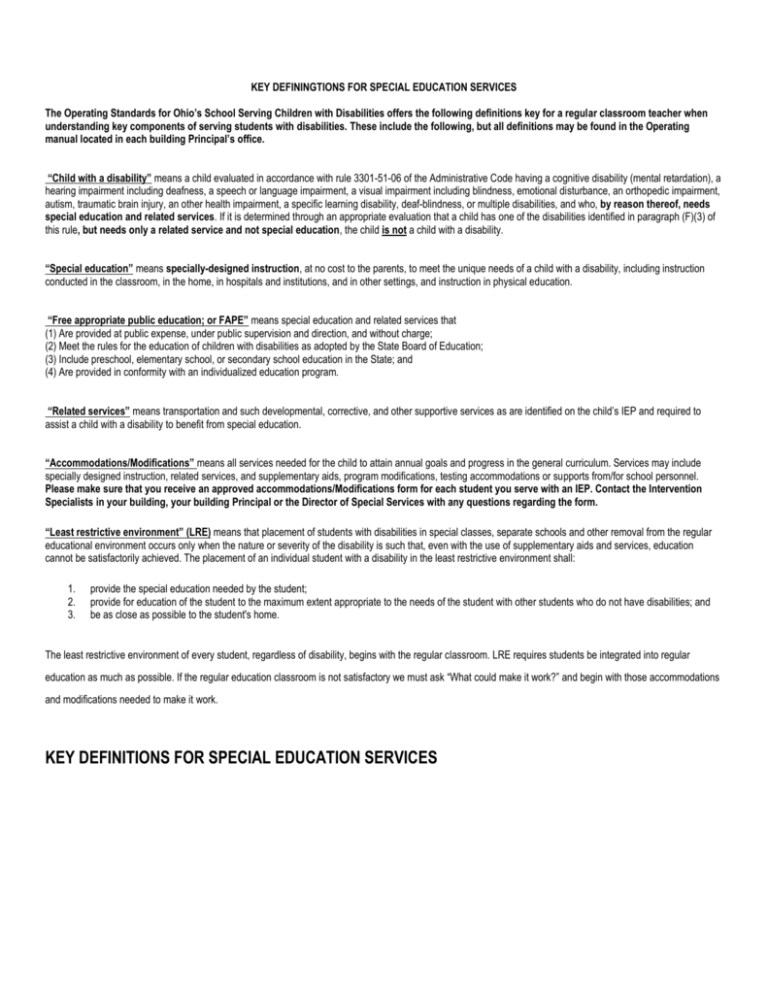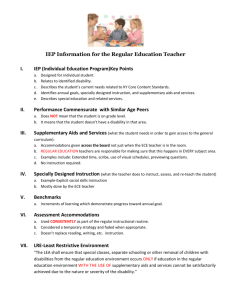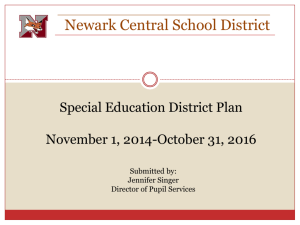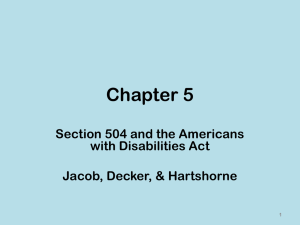Key Definitions for Special Education
advertisement

KEY DEFININGTIONS FOR SPECIAL EDUCATION SERVICES The Operating Standards for Ohio’s School Serving Children with Disabilities offers the following definitions key for a regular classroom teacher when understanding key components of serving students with disabilities. These include the following, but all definitions may be found in the Operating manual located in each building Principal’s office. “Child with a disability” means a child evaluated in accordance with rule 3301-51-06 of the Administrative Code having a cognitive disability (mental retardation), a hearing impairment including deafness, a speech or language impairment, a visual impairment including blindness, emotional disturbance, an orthopedic impairment, autism, traumatic brain injury, an other health impairment, a specific learning disability, deaf-blindness, or multiple disabilities, and who, by reason thereof, needs special education and related services. If it is determined through an appropriate evaluation that a child has one of the disabilities identified in paragraph (F)(3) of this rule, but needs only a related service and not special education, the child is not a child with a disability. “Special education” means specially-designed instruction, at no cost to the parents, to meet the unique needs of a child with a disability, including instruction conducted in the classroom, in the home, in hospitals and institutions, and in other settings, and instruction in physical education. “Free appropriate public education; or FAPE” means special education and related services that (1) Are provided at public expense, under public supervision and direction, and without charge; (2) Meet the rules for the education of children with disabilities as adopted by the State Board of Education; (3) Include preschool, elementary school, or secondary school education in the State; and (4) Are provided in conformity with an individualized education program. “Related services” means transportation and such developmental, corrective, and other supportive services as are identified on the child’s IEP and required to assist a child with a disability to benefit from special education. “Accommodations/Modifications” means all services needed for the child to attain annual goals and progress in the general curriculum. Services may include specially designed instruction, related services, and supplementary aids, program modifications, testing accommodations or supports from/for school personnel. Please make sure that you receive an approved accommodations/Modifications form for each student you serve with an IEP. Contact the Intervention Specialists in your building, your building Principal or the Director of Special Services with any questions regarding the form. “Least restrictive environment” (LRE) means that placement of students with disabilities in special classes, separate schools and other removal from the regular educational environment occurs only when the nature or severity of the disability is such that, even with the use of supplementary aids and services, education cannot be satisfactorily achieved. The placement of an individual student with a disability in the least restrictive environment shall: 1. 2. 3. provide the special education needed by the student; provide for education of the student to the maximum extent appropriate to the needs of the student with other students who do not have disabilities; and be as close as possible to the student's home. The least restrictive environment of every student, regardless of disability, begins with the regular classroom. LRE requires students be integrated into regular education as much as possible. If the regular education classroom is not satisfactory we must ask “What could make it work?” and begin with those accommodations and modifications needed to make it work. KEY DEFINITIONS FOR SPECIAL EDUCATION SERVICES









